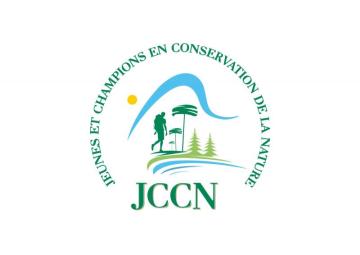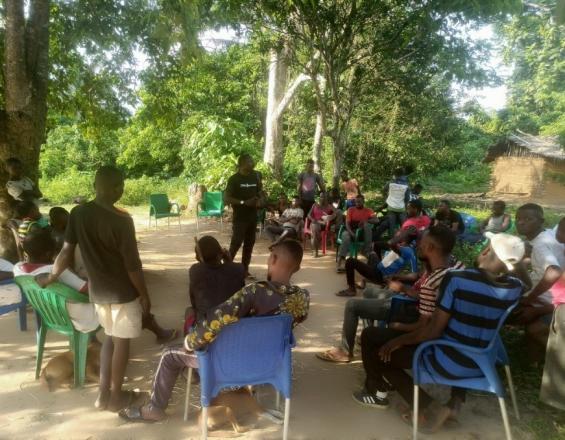
The INDJOLO village terroir and its contribution to biodiversity conservation

The INDJOLO village terroir is located in the BOKATOLA sector, in the INGENDE territory. With an estimated total surface area of 1,358.51 ha, the terroir aims to promote community-based land management based on rational and coherent planning. The Indjolo village terroir is home to a wide variety of plant and animal species. Indjolo's ecosystems are home to numerous species of wildlife, including monkeys and wild boar. In terms of ecosystem services, the swamp forests, with their large peatland reserve, are known for their capacity to sequester considerable quantities of carbon. They are also home to a number of non-timber forest products, including Fumbwa(Gnetum africanum), a wild vegetable that is widely consumed and highly prized locally, Marantaceae leaves, caterpillars, edible mushrooms, and so on. The initiative thus contributes to the sustainable management of natural resources by local communities.
Context
Challenges addressed
The management plan put in place to meet several challenges linked to slash-and-burn agriculture, carbonization, hunting and night fishing are the main pressures threatening the ecosystems of the terroir.
Location
Process
Summary of the process
CLD members are assisted by local and village chiefs in all decisions concerning land allocation and natural resource management. Community members are regularly made aware of the need to respect established rules of access, and are invited to attend the community assemblies at which certain decisions are taken.
Building Blocks
Territory developed for planned and traditional management of natural resources
The terroir is set up for community management of the land, which is subject to rational and coherent planning.
Enabling factors
Traditional, planned resource management
Lesson learned
Natural resource management planning is sustainable and coherent.
b)Existence of an area development plan and Local Development Committee (LDC)
The terroir is governed by members of the local and indigenous communities, brought together in the Local Development Committee (CLD).
Enabling factors
The Local Development Committee (CLD) is the body in which all decisions relating to the management of the terroir are taken.
Lesson learned
Management through the CLD is participative.
Impacts
The rights recognized in the traditional governance of the terroir are customary in nature and are linked to the traditional use of land and natural resources. As such, all community members have the right to access natural resources and use the land in accordance with the development plan, which has set aside areas for agriculture, fishing, housing, etc., based on the distribution pattern of habitat types (dense forest, secondary forest, savannah, etc.).
Beneficiaries
Beneficiaries are members of local communities, members of civil society and environmental activists.
Sustainable Development Goals
Story
The INDJOLO village terroir is located in the BOKATOLA sector, in the Bakaala Batsina groupement, INGENDE territory. With an estimated total surface area of 1,358.51 ha, the terroir aims to promote community-based land management, subject to rational and coherent planning for sustainable use. The development of the Indjolo terroir was initiated as part of the national policy on Land Use Planning in the Democratic Republic of Congo, established by Ministerial Order N°034/CAB/MIN/EDD/03/3/BLN/2015 of July 3, 2015. The Indjolo village terroir is home to significant plant diversity with several species used as timber. The area is also a sanctuary for numerous species of wildlife such as monkeys, wild boar, etc. In terms of ecosystem services, the swamp forests, with their large peatland reserves, are known for their capacity to sequester a considerable amount of carbon. They are also home to a number of non-timber forest products, including Fumbwa(Gnetum africanum), a wild vegetable that is widely consumed and well appreciated locally, Marantaceae leaves, caterpillars, edible mushrooms, etc.
As such, all community members have the right of access to natural resources and land use, in accordance with the land-use plan that has set aside zones for agriculture, fishing, housing, etc., based on the distribution pattern of habitat types (dense forest, secondary forest, savannah, etc.). Cultural and spiritual values are promoted through community meetings initiated by customary guardians, and by raising awareness of the need to respect customs and traditions.



